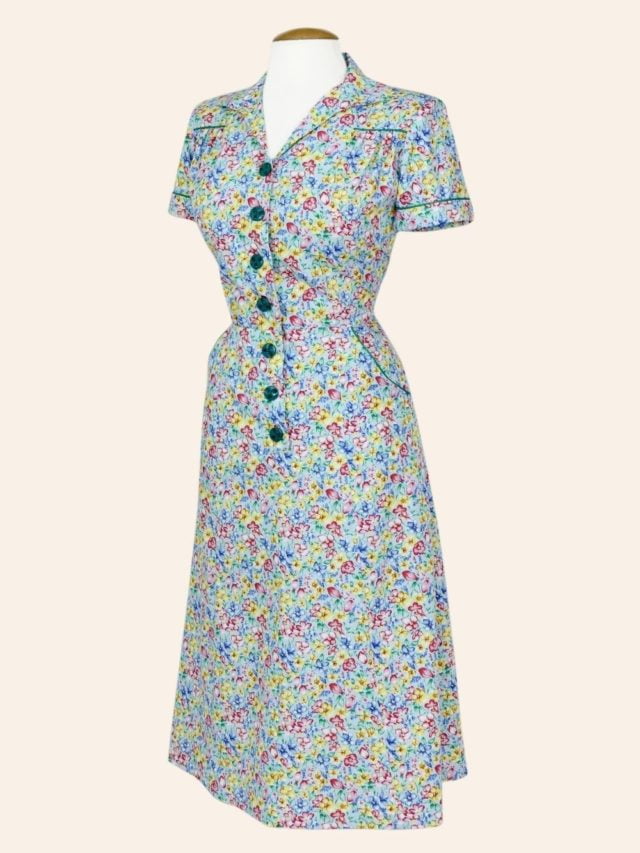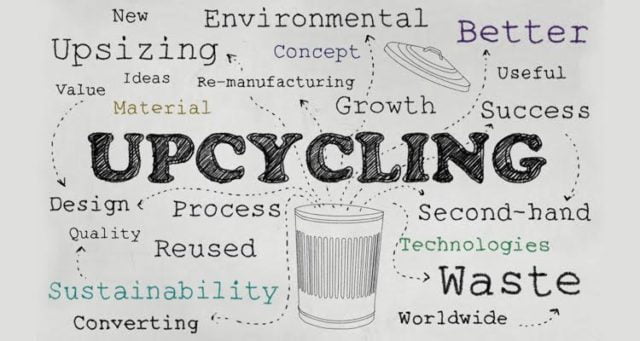During a war or a major economic slump, one of the first industries to take a hit is the luxury industry. Most people cut back on whatever is not essential in order to have more resources for food and shelter.
As a result, the fashion industry usually takes a hit, with its products being deemed “extravagances.”
However, women in the 1930s and 40s were resourceful people who weren’t going to let little things like the Great Depression and a WORLD WAR get in the way of following the latest styles.
Here are a few ingenious ways they stayed ahead of the fashion curve despite the cash crunch:

1. Fake Stockings:
Nylon was rationed during World War 2, and so nylon stockings became difficult to obtain. In order to give the illusion of wearing stockings, women used to draw seams on their legs using a black pen or eyeliner. They didn’t let a little thing like a World War get in the way of being stylish!

2. Dresses from Flour Sacks:
Women in the 30s and 40s usually stitched their own clothes. During the Great Depression, they had to resort to using flour sacks as dress material.
On noticing this, factories began packaging flour in colourfully printed sacks with washable labels in order to provide women with pretty dress material.
This was quite a thoughtful step on behalf of those factories- it’s good to know that kindness didn’t fade away during hard times.

3. Flower Patterns:
During the Depression Era, it wasn’t possible for people to keep buying or tailoring new clothes, as many were unemployed and barely scraping together enough money for their daily bread.
Women smartly decided to wear clothes with floral prints, as the small, repetitive prints hid wear and tear, and gave the illusion of a perfectly maintained dress even if it was ageing and patched.
This is both clever and economical- flower patterns are considered vintage and are highly in demand today, showing that even a practical trend can echo through the decades.
Read More: Why Women Dressed Like Men In The 1920s
4. Reusing Buttons:
Buttons were usually pretty and colourful, and were a point on interest on dresses.
Due to being unable to afford decorative buttons regularly, women snipped the buttons off clothes that were too old to wear anymore and stitched them onto their new clothes.
Nowadays zips have replaced buttons to a large extent in women’s fashion, and decorative buttons from the old days are considered collector’s items.

5. Altering and Upcycling:
Upcycling old clothes is not a recent Instagram trend- it was the done thing during the cash crunch of the Great Depression!
Women would cut down the old clothes of family members and have them altered to fit their own measurements, thus creating a brand new outfit!
Upcycling old clothes is frequently done in the 2010s by environmentally conscious people in order to reduce the waste that comes from throwing away old clothes and adding to the junk in landfills.
I personally feel we can take tips from these resourceful and creative women on how to make fashion more sustainable and less wasteful. It is possible to stay stylish and keep up with the trends without constantly splurging on new clothes.
Image Credits: Google Images
Sources: Misfit History, Dusty Old Thing, Wikipedia
Find the author online at: @samyukthanair_
More Recommendations:
“I Am A Boy And I Like Wearing Makeup”: Jason Arland Shares His Struggles Of Being Himself With ED































